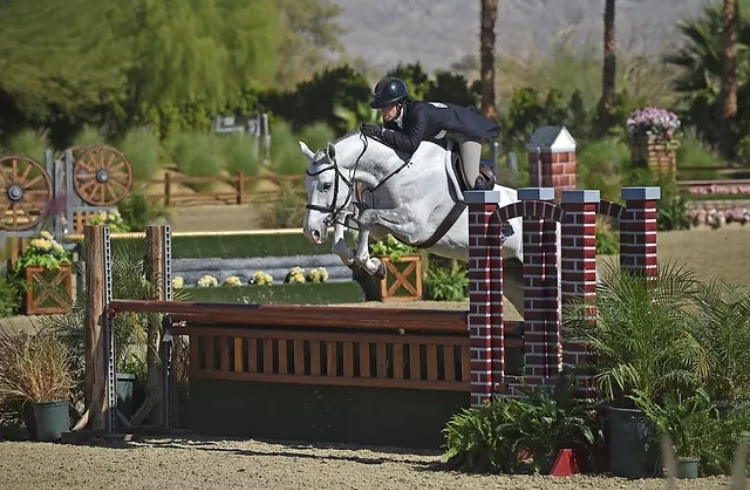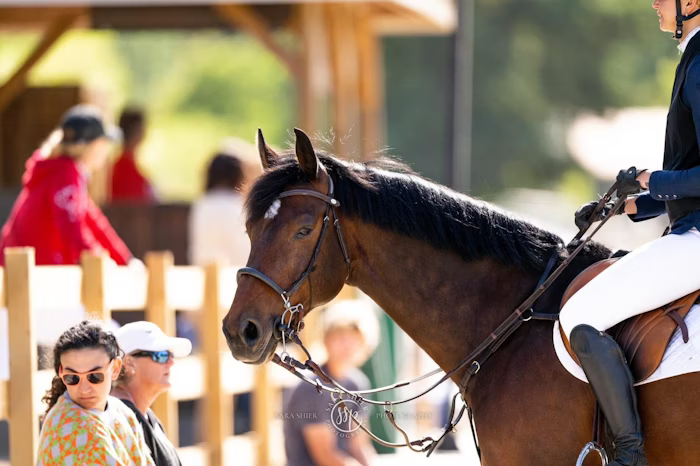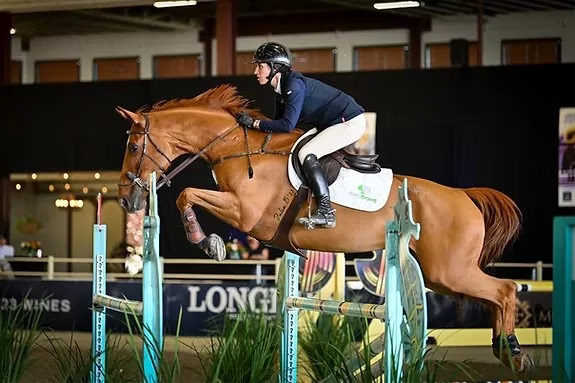Horse Shopping Blog Series: Evaluating the perfect equine partner

By Phillipa Melski of Flipside Horses
When I was a kid, we didn’t “shop” for horses. We got horses from the racetrack that were too slow or horses off my dad’s pack string that I thought could jump. Grit and tenacity were my best friends and I learned so much being able to bring out the best in whatever was thrown my way. It gave me my foundation, the passion for what I do, and the patience and drive to choose a career in this industry.
As the industry has evolved, shows have expanded, horses have changed, and expectations have increased. In addition, showing schedules are much more crowded, more finals to consider, more horses to ride. This affects what type of horse a rider looks for so they can be successful right now in this world of exceptional athletes. I still have my eye open for that special OTTB that can compete in today’s show scene, but I’m also realistic that more times than not, due to their suitability for the job, warmbloods have taken over the sport - some with a lot of blood, and others who are calm and steady.

With the ever changing environment, much thought must go into finding each rider’s perfect horse. It is not easy, but it is one of the most rewarding parts of my job. And if we’re paying attention, I believe the universe has a way of delivering the right horse to their person.
Below is a bit more about what I look for in matching two partners together…
- Finding the right horse partner is like being a matchmaker for people - a lot of expertise, but also a bit of luck and chemistry is needed. It’s helpful to collaborate with my colleagues when I am shopping for clients. We each have different gifts for matching riders to horses and for seeing what’s really in a horse.
- Budget can make it challenging to find the best match. That said, I’m always up for a challenge, so I’m confident I can find the very best horse within an owner’s budget. On one side of the coin, I’d say spend as much as you can comfortably. But on the other side, horses are living beings that get hurt doing the smallest things, so you have to play out those scenarios from the very beginning. That needs to be part of your budget analysis.
- In a perfect world, if I were looking for every student, they would each have 3 horses. One green horse with maybe a few difficulties and two experienced “made” ones. Of course, that is not often our reality, so which way you go is part of our conversation. Generally, riders learn faster on trained, good-natured horses, while greener horses are a slower path. However, greener horses for the right rider can accelerate their learning because they are also teaching the horse and will likely face more challenges to overcome. Both teach riders different skills and neither is an impossible route to reach your goals, but they could affect your timeline and budget.
- Once I meet a horse, the first thing I look at is their eye and the feeling I get. You can tell a lot from looking at a horse’s eyes - it is the portal to their soul. Do we connect, is the horse present, personable? I honestly look at horses very similar to how I look at people. They all are different and some you click with more than others.
- Personality is a big part of what matters. Are they the type of horse that’s going to call in sick to work if they have a hangnail or are they strong in their character? That being said, I can usually see through things that may be contributing to their demeanor if it seems off at first. Sometimes they need a different farrier, a chiropractor, a different program, some Gastroguard, etc. That’s where the buying from people we know comes into play because I trust them to go deeper on the horse’s history.
- Of course, I look at the talent and if they are suitable for the rider. The goal is to set both horse and rider up for success, for a long career, and a healthy and happy life. If we buy a horse that doesn’t have the ability to do the intended job, all those goals are at risk.
- I also evaluate their looks and how they’re put together. While a beautiful, show stopping animal will get noticed in the ring, it’s also because conformation can predict ability and soundness. When vetting the horse, I always take into account their hooves and conformation. That being said, some of the best horses I have found have not had a perfect PPE or perfect feet.
- I always tell my students it’s normal for things to start clicking at 6 months. Sometimes it’s sooner, sometimes it’s longer. Many variables play into that - the rider’s goals, how often they ride, how much experience and proper knowledge they have, and their personality. However long it takes, patience and flexibility are key to enjoying this amazing journey.
There are many facets to the horse shopping experience. This first blog is about my personal horse shopping approach, but look for the next one, which includes tips for horse owners. If you are considering buying or selling a horse, feel free to reach out, as we'd love to explore how we might help. Flipside Horses

